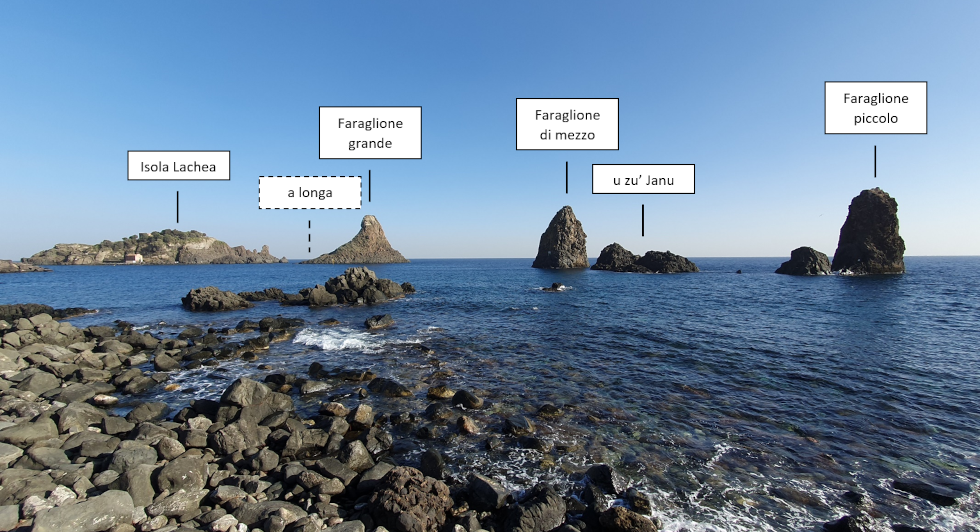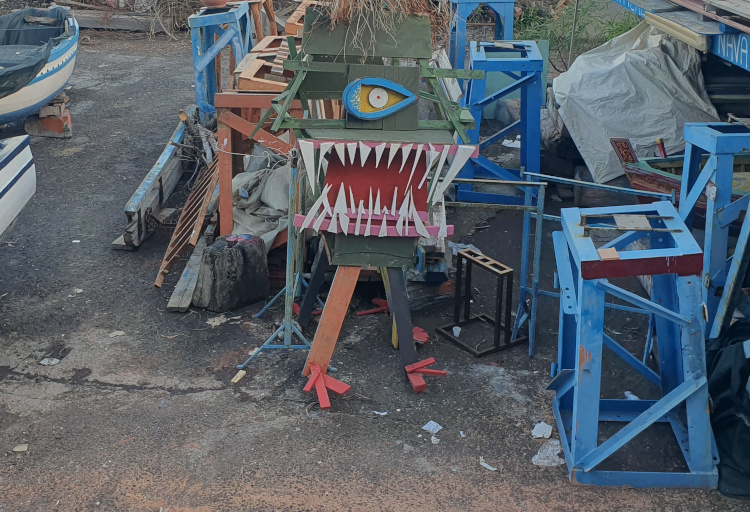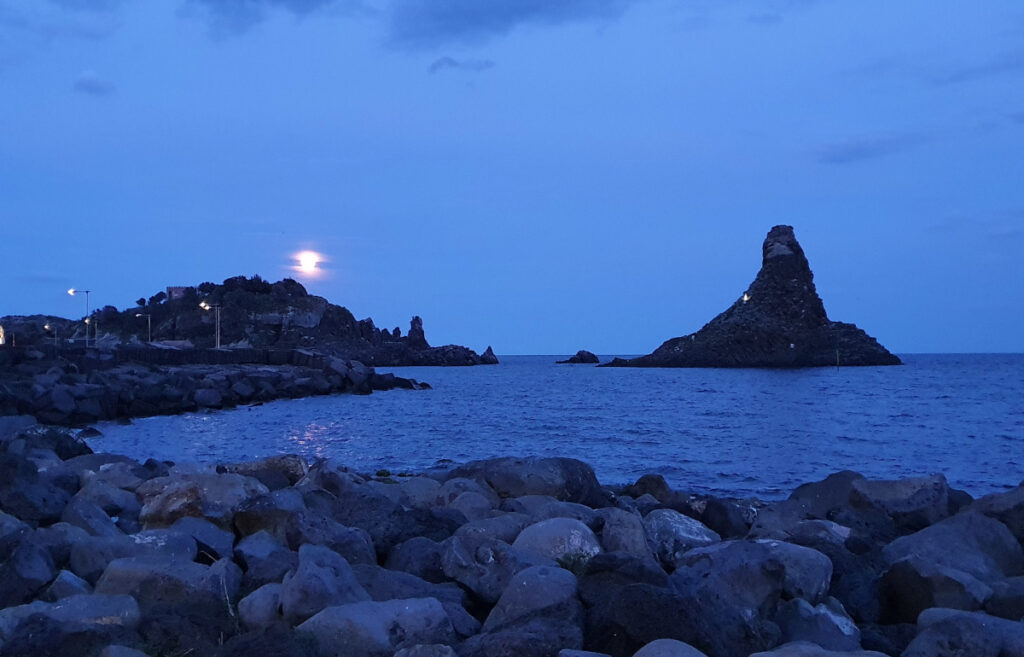Aci Trezza is located just under 10 kilometres north of Catania on the so-called Cyclops Coast. Once a small fishing village, it is now a popular excursion destination. The small town of around 5,000 inhabitants has a picturesque harbour, and the Cyclops Islands, which are probably the main attraction, lie just off the coast.
What to see in Aci Trezza?
When you visit Aci Trezza, you can walk along the seafront and start your day with a coffee and something sweet in one of the many cafés. Beware, in high season, especially at weekends, it can be very crowded!
Take a look at the harbour and walk along the pier. From the end of the pier you have a beautiful view of the whole town. From the harbour, many boats offer excursions around the Cyclops Islands and for lunch you can get fresh fish and seafood in the restaurants.

Away from the coast, you can stroll through the winding streets and breathe in the Italian way of life. If you still have time, visit the neighbouring town of Aci Castello with its Norman fortress!
I Faraglioni – The Cyclops Islands
The group of islands off Aci Trezza is about 560,000 years old and consists of the larger islands of Lachea, Faraglione Grande and Faraglione di Mezzo and some smaller rocks. The islands date from the early period of Etna’s formation and are made of columnar basalt. You can also admire these 5- or 6-sided lava columns in the harbour of Aci Trezza. You can read more about how the islands were formed here: The lava tunnels of Etna I
The Faraglioni were already colonised in Greco-Roman times. They were declared a nature reserve in 1998 and have been looked after by the University of Catania ever since.
Faraglione means cliff, by the way.

According to the story, the Cyclops Islands were created when Polyphemus, a Cyclops, threw huge boulders at Odysseus and his companions after they had escaped from Polyphemus’ imprisonment by gouging out his eye (we have already told you the story in this blog: The lava tunnels of Etna I). Fortunately, Polyphemus missed Odysseus at that time.
Even today in Aci Trezza you will find references to the story of the one-eyed Polyphemus:


Aci Trezza in literature: the novel “I Malavoglia”
The town is also known for the novel “I Malavoglia” by the Sicilian writer Giovanni Verga (born 1840 in Catania, died 1922 also in Catania). In Italy, every schoolchild reads it. The novel describes the life of the Toscano family, called Malavoglia, who live in Aci Trezza and make a living from fishing. In their house “Casa del Nespolo” (House of the Medlar Tree) live the head of the family ‘Ntoni with his son, his wife and their 5 children. The initially hard-working but good life of the family is marked by numerous strokes of fate.
The novel was filmed in 1948, also in Aci Trezza. Today, a small museum “Museo del Nespolo” commemorates the novel, which also organises tours to the film locations.

A monument in front of the church of San Giovanni Battista commemorates the writer Giovanni Verga.
The origin of the name Aci Trezza: Aci and Galatea
If you are travelling in the Etna area, you will discover several places with “Aci” in their name: Aci Castello, Acireale, Aci Trezza, …
What is it all about? Aci was a river that no longer exists. Only these place names still refer to it. But the name Aci derives from a (sad) story from Greek mythology:
Aci was a shepherd (young and beautiful, as befits Greek mythology) who fell in love with the beautiful nymph Galatea (one of the 50 Nereids, the daughters of the sea god Nereus). She returned his love.
But the cyclops Polyphemus also fell in love with Galatea. One night, as he watched the young lovers on the beach, he became so enraged that he hurled a lava boulder at Aci. This time it did not miss its target and killed Aci. Galatea turned Aci’s blood, which was oozing out from under the rock, into a river so that her lover could continue to be close to her: when the river flows into the sea, Aci and the sea nymph unite.
The river Aci no longer exists today, it is said to have disappeared with the eruption of Etna in 1169, when lava poured down to the sea in the north of Catania. The exact course is no longer known. It is said to have risen between the municipalities of Acireale and Aci Campena and flowed into the sea south of Acireale.
One reason for this tragic love story may perhaps be that people at that time could not explain a freshwater spring so close to the sea.
In the area where Aci used to flow, a total of 9 places bear his name, thus commemorating the young lovers for a long time to come.
By the way, where the name Trezza comes from has not been definitively clarified. The most likely explanation is that it derives from the Sicilian “tri pizzi”, three peaks (of the Faraglioni).
So if you’re staying in Catania or nearby, Aci Trezza is definitely worth a visit!



